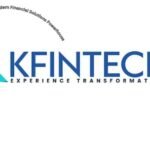Understanding Bio-Digital Convergence
Bio-Digital Convergence is a groundbreaking evolution at the intersection of biological and digital systems. It refers to the integration of biological data and functions with digital devices, leading to new possibilities in health, finance, identity, and daily life. As technologies grow increasingly intelligent and interconnected, the physical and digital boundaries that once defined human interaction with technology are dissolving. Bio-digital convergence transforms how humans interact with the digital world—through the body itself.
This convergence is not science fiction—it is already happening. The use of biometric identification, wearable fitness trackers, implanted chips, and smart wallets are examples of how human biology is merging with digital technologies to create seamless and highly personalized experiences. It represents the next step in human evolution through technology, where our bodies become interfaces and conduits of digital interactions.
Wearable Technology: The Gateway to Bio-Digital Integration
Wearable technology is central to the rise of bio-digital convergence. From smartwatches and fitness bands to medical-grade wearables that monitor chronic conditions, these devices are now an extension of the human body. They collect real-time biological data such as heart rate, blood pressure, oxygen saturation, and sleep patterns. This data is then analyzed digitally to offer actionable insights into our health and well-being.
Smartwatches, for instance, are now capable of conducting ECGs, detecting falls, and sending emergency alerts. Athletes and individuals with chronic conditions rely on these tools not only for monitoring but also for proactive care. Beyond health, wearables are starting to manage communication, authentication, and even payments, making them multifunctional and deeply integrated into everyday life.
The Emergence of Smart Wallet Technology
On the other side of the bio-digital spectrum lies wallet technology—digital wallets and blockchain-based identification systems. These systems store financial information, digital IDs, health credentials, and more. What makes them revolutionary in the context of bio-digital convergence is their capacity to integrate with biometric data and wearable devices.
Today’s digital wallets, such as Apple Wallet, Google Wallet, and various cryptocurrency wallets, are not just about payments. They are becoming secure, decentralized identity hubs. With facial recognition, fingerprint scanning, and even voice biometrics, the way users interact with their digital assets is becoming more personal, more secure, and more body-centric.
When wearable devices incorporate wallet functionalities, they go beyond fitness and health tracking. For instance, a smartwatch or biometric ring can be used to authenticate identity, make payments, unlock doors, or access secure data—simply by being on your body. This is where wearable technology and wallet technology intersect in the most tangible expression of bio-digital convergence.
Key Applications of Bio-Digital Convergence
The applications of bio-digital convergence are vast and rapidly expanding. Here are some of the most transformative areas:
1. Healthcare Revolution
Bio-digital convergence is set to revolutionize healthcare delivery and diagnostics. Wearables monitor vital signs continuously, allowing AI-driven health platforms to predict health issues before they become critical. Hospitals and clinics are using wearable sensors to track patient recovery, while telemedicine platforms integrate biometric feedback for remote diagnosis. Future devices may deliver real-time, personalized medical interventions based on a person’s unique biological makeup and lifestyle.
2. Financial Transactions and Identity
The combination of biometric authentication and digital wallets creates a frictionless, secure financial ecosystem. Payments can be made using voice, fingerprint, or facial scans—no physical card or device required. Additionally, self-sovereign identity systems, enabled by blockchain, empower users to control their identity credentials. These digital IDs can be stored securely within wearable devices and used for travel, voting, healthcare access, or financial services.
3. Workplace and Access Control
In corporate environments, bio-digital convergence is being used for secure access, attendance tracking, and productivity management. Biometric wearables can serve as ID badges, providing access to restricted areas or company systems. They can also monitor stress and fatigue, promoting a healthier and safer workplace.
4. Fitness and Lifestyle Enhancement
Smart rings, bands, and patches track everything from calories burned to hydration levels. But the next frontier lies in AI-driven analysis, which transforms raw biological data into personalized recommendations for diet, exercise, and mental wellness. These systems evolve with the user, providing a unique blend of digital coaching and biological feedback.
5. Government and Public Services
Governments are exploring bio-digital IDs linked to digital wallets for public service delivery. These IDs may include health records, driver’s licenses, and voting credentials, all accessible through wearable tech. This reduces bureaucracy, increases security, and enhances citizen experience.
Privacy and Ethical Considerations
While the promises of bio-digital convergence are impressive, the concerns surrounding privacy, consent, and control cannot be ignored. Biological data is the most personal form of information a person can share. Its misuse or unauthorized access could lead to significant risks, including surveillance, discrimination, or identity theft.
Ensuring ethical use of this technology means developing strict regulations around data ownership, consent, and cybersecurity. Companies must be transparent about what data is collected, how it’s used, and who has access. There must also be robust systems for users to opt-out or delete their data permanently.
Furthermore, the growing dependence on bio-digital systems raises concerns about access inequality. Not everyone can afford high-end wearables or may live in regions without digital infrastructure. This creates a potential digital divide, where only a portion of the population benefits from these advances while others are left behind.
The Future of Bio-Digital Living
Looking ahead, bio-digital convergence will likely become ubiquitous, invisible, and indispensable. Future wearables may be implantable, flexible, and capable of advanced diagnostics. Brain-computer interfaces could allow users to control devices with thoughts, while AI systems manage bodily functions and health in real time.
Our wallets, identities, and personal records could reside not just in the cloud, but literally on our bodies—authenticated by our heartbeat, movement patterns, or DNA. Cities may adapt to citizens wearing bio-digital devices, offering personalized environments and services as individuals move through spaces. Healthcare will shift from reactive treatment to predictive, data-driven wellness management.
This is not simply a change in technology—it’s a transformation of the human experience. Just as smartphones redefined communication and computing, bio-digital convergence will redefine identity, health, commerce, and community.
Conclusion: Navigating the Bio-Digital Horizon
Bio-digital convergence marks a powerful leap forward in integrating biology with digital infrastructure. As wearable and wallet technologies merge, they enable a future where the human body becomes both the password and the interface. It holds the potential to enhance lives through smarter healthcare, seamless transactions, and more personalized experiences.
However, it also demands vigilance, ethical governance, and inclusive access. The choices we make today in designing and adopting these technologies will determine whether this future is equitable and empowering—or invasive and divisive.
The convergence of body and data is no longer a vision of tomorrow—it is today’s reality. Embracing it wisely will be the key to unlocking its full potential.
may Also Read: tuguiausa







